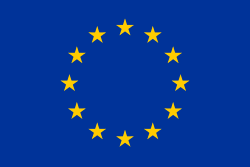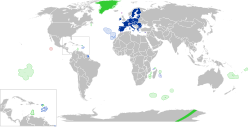

The following outline is provided as an overview of and topical guide to the European Union:
Contents
The European Union (EU) is an economic and political union of 27 member states, located primarily in Europe. [1] [2] [3] [4] Committed to regional integration, the EU was established by the Treaty of Maastricht on 1 November 1993 upon the foundations of the pre-existing European Economic Community. [5] With about 445 million citizens, the EU generates an estimated 30% share (US$18.4 trillion in 2008) of the nominal gross world product. [6] The EU has seven principal decision-making bodies known as the Institutions of the European Union, while the adoption of laws and coordination of EU policies is the role of the Council of the European Union which currently meets in ten different configurations.



